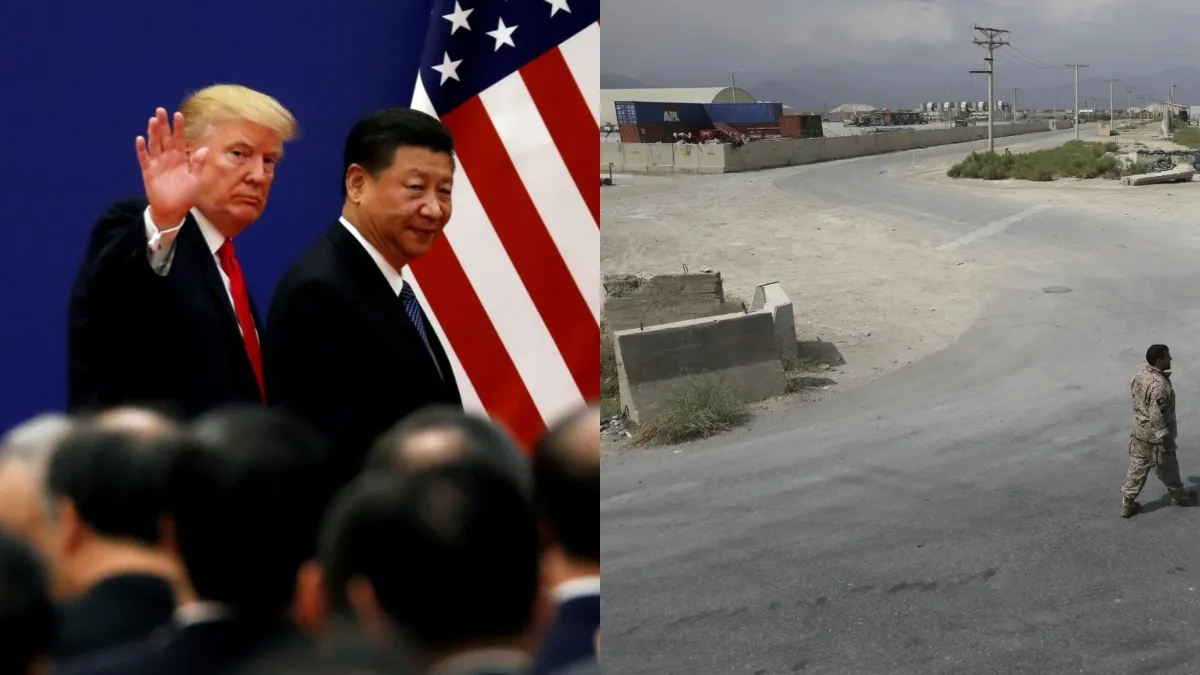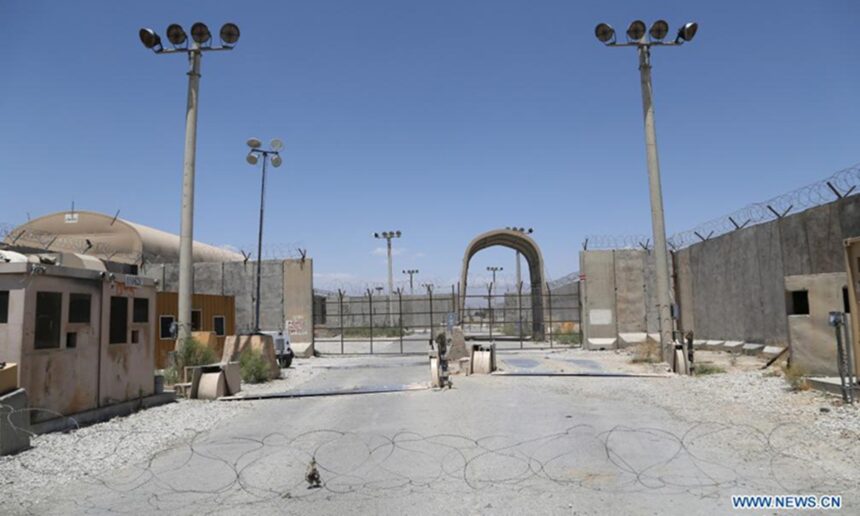In a recent statement that reignited geopolitical debate, former US President Donald Trump claimed that China now controls the Bagram Airfield in Afghanistan—once the most strategic American military base in the region. Trump’s assertions, delivered at a campaign-style event, quickly drew international attention and a sharp denial from the Taliban, who currently govern the war-torn country.
The Bagram Claim

According to Trump, the Biden administration made a catastrophic error in vacating Bagram, saying: “They gave up Bagram, and right now, China occupies Bagram.” He also argued the base’s location—“an hour away” from where China allegedly develops nuclear weapons—made it a pivotal asset in global security.
However, this claim was immediately contradicted by the Taliban, who declared: “Bagram is controlled by the Islamic Emirate, not China. Chinese troops are not present here.”
Where Is China’s Nuclear Development Based?
Trump did not specify which Chinese nuclear facility he meant. Analysts point out that the Lop Nur testing site in Xinjiang, where China first tested a nuclear weapon in 1964, is approximately 2,000 km from Bagram. The closest active facility, Koko Nur in Qinghai province, is even farther. There is currently no known Chinese military deployment at Bagram or near these areas in Afghanistan.
The History of Bagram Airfield
Bagram Airfield, located roughly 60 km north of Kabul in Parwan province, has long been seen as the geostrategic heartbeat of Afghanistan. Originally built by the Soviet Union in the 1950s, it was used heavily during the Soviet-Afghan War (1979–1989). Later, it became a key battleground between the Taliban and the Northern Alliance during the 1990s.
Following the 9/11 attacks, the United States transformed Bagram into its primary military base in Afghanistan, investing in runways, hospitals, fast food chains, and even a detention center with a reputation akin to Guantanamo Bay.
The U.S. Withdrawal and the Taliban Takeover
The Trump administration’s 2020 deal with the Taliban initiated the US-NATO withdrawal. By July 2, 2021, Bagram was abandoned by American forces. The Taliban fully took control on August 15, 2021, shortly before the final US military evacuation from Kabul on August 30.
At the time, then-Defense Secretary Lloyd Austin said: “Retaining Bagram would have required putting as many as 5,000 US troops in harm’s way just to operate and defend it.”
China’s Interests in Afghanistan
While China has not officially deployed troops to Bagram or anywhere else in Afghanistan, its diplomatic engagement with the Taliban has intensified. In 2023, Beijing even granted ambassador credentials to a Taliban diplomat—a significant political gesture not yet mirrored by many Western powers.
China’s interest in Afghanistan is largely driven by security concerns in Xinjiang, where a Muslim Uyghur population resides. Beijing fears militant groups in Afghanistan could influence or destabilize its western frontier.
Fact or Fiction?
Despite Trump’s dramatic claim, there is no concrete evidence to support the idea that China has physically occupied Bagram Airfield. The base remains under Taliban control, and the group continues to reject the notion of any military partnership with China.
Still, Trump’s statement reflects a broader strategic anxiety: the fear that America’s exit created a vacuum that adversaries like China might eventually fill, not with troops perhaps, but with influence, investment, and intelligence.
Conclusion
As Trump revives Bagram in his campaign rhetoric, the airfield becomes a symbol of missed opportunity and shifting global influence. While the Taliban continues to deny any Chinese military presence, China’s growing diplomatic and economic footprint in Afghanistan remains a critical subject for both regional players and global superpowers to watch.
Stay tuned to our blog for more updates on US foreign policy, Asian geopolitics, and strategic developments in Afghanistan.









